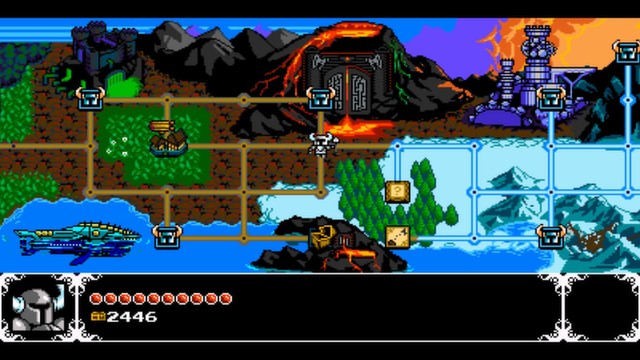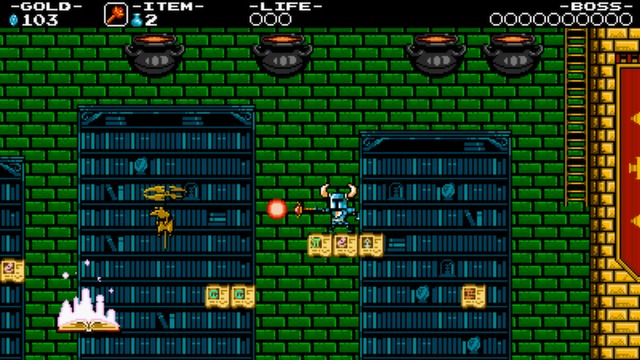Old-skool gaming for a modern world… can you dig it?
There's a lot to be said for today's games. Beautiful and lush, the technological capabilities rival anything that Hollywood can produce. With the potential to captivate the player in a deep, stirring storyline or to provide players heart-pounding action from the opening screen, a wide swath of gaming possibility exists bound only by imagination; a product of years of gaming evolution. This year alone we've seen incredible titles, like the pulsating action of Titanfall, the realism of EA Sports UFC, the uproarious comedy of South Park: The Stick of Truth, or the beautiful tracks of Mario Kart 8.
But back in the day—you know, back when the year started with the number 1—we didn't have these technological advances. Too many characters on the screen and the game (and some players) began its rendition of epilepsy, blinking and straining to maintain its composure. The lush greens and watery blues were only things of dreams as designers were limited to a simple color palette and only eight bits to work with. Yes, they were technologically stunted but my God, the games were great. Legends like Mario, Link, Mega Man, Samus Aran, and the Final Fantasy dynasty were born in this era, and are still critically regarded as pillars of the industry.
Some might argue that the games from that era couldn't survive against the technologically-superior titles of today. From here on out, my counterargument to that will be Shovel Knight, for this game is damn near perfect.
Shovel Knight is the first venture from Yacht Club Games, headed by former WayForward Technologies developer Sean Velasco and one of the earliest games to be funded by a crowdsourcing campaign. The game is purposefully designed to replicate an 8-bit game, down to the details of the Nintendo Entertainment System's specific color palette. You'll swear this was straight out of the Capcom vaults in 1988 (minus the character blink).
Players control the eponymous Shovel Knight, who once was hailed as the hero of the land along with his companion, Shield Knight. Together, they journeyed far and wide for all sorts of treasure. But one day, the two explored the Tower of Fate and fall victim to a cursed amulet, leaving Shovel Knight unconscious, and Shield Knight gone. Falling into depression, Shovel Knight gives up adventuring and becomes a recluse. The evil Enchantress and her Order of No Quarter rise to power in his absence and unseal the Tower of Fate. Shovel Knight sets out to the Tower of Fate to face The Enchantress and hopefully find and rescue Shield Knight.
From the opening cutscenes, the game launches players into an introductory level, and let the throwbacks begin. The team has taken the best parts and mechanics of classic gaming and infused them into Shovel Knight, making the indie title not only any retro gamer's wet dream, but simply a phenomenal title in its own right. It plays like an early Mega Man, with the graphical prowess of a title like Chip 'N' Dale Rescue Rangers or Darkwing Duck. Shovel Knight fights enemies with—you guessed it—his shovel, sharpened to a point and used like a sword. His shovel also digs, breaks up rocks of various types, unearths jewels, and finds numerous secrets strewn about the land. He even can do a downward jump with his shovel, stabbing below him or bouncing on enemies or obstacles to bounce higher, like Scrooge McDuck's pogo jump from the Capcom smash hit DuckTales. Upon completion of the level, Shovel Knight can take those gems to villages inspired by Zelda II: The Adventure of Link where he can purchase relics, armor, and shovel upgrades, as in Castlevania II: Simon's Quest, even unlocking new upgrades to life and magic meters. The overworld map smacks of Super Mario Bros. 3, and the chiptune music throughout the game sounds like what would happen if the soundtracks of Mega Man 2 and Final Fantasy had a glorious baby.
The amazing thing about this, and the proof that the developers truly love games as much as gamers do, lies in the fact that with all these influences and homages, at no point in time does Shovel Knight feel like anything other than Shovel Knight. It's easy to recognize the source material, but Yacht Club Games sews them together with such craftsmanship it's impossible to call the game a clone of any of the other games aforementioned.
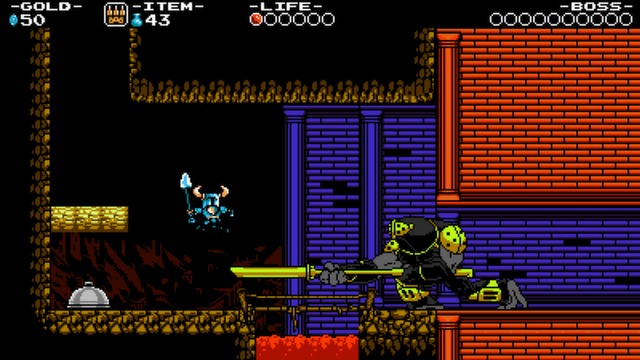
Some NES games were notoriously difficult and those games were often faced with the question of whether their difficulty was caused by great design (Battletoads) or awful design (Ninja Gaiden – yeah, I said it). In the case of Shovel Knight, the answer was “great design” 100% of the time. Each new level felt new and built on the mechanics players learn as they play, introducing new ones in each new lair. A perfect example is found in the Lost City, the lair of the Mole Knight. The Lost City is set in mines found inside a volcano and as such, volcanic rock is introduced. Up to this point, Shovel Knight has dealt with regular rocks, softer rocks that take less effort to destroy, and harder rocks that take more effort. But volcanic rock, like the structures from which they form, are explosive and if in a row or column set off a chain reaction. Sounds like no problem, right?
And then Shovel Knight stands on top of two hard rocks, which must be broken by his downward stab, but then he needs to stop before he punctures a volcanic rock, the only thing standing between him and a pool full of liquid hot magma. Fail to stop in time, and Shovel Knight becomes a hot Thermos for organs; success puts him square into the line of a Red Knight, who also brandishes a blade capable of blowing the floor to smithereens. And this is only one room. It's challenging and there will be many deaths, but this particular room's completion actually caused a bit of pride.
That scenario occurs throughout the game. Every death, every demanding platforming puzzle that bests players, can be traced to player failure, not faulty level design. While that sounds depressing, it makes every success and victory thoroughly satisfying. The relics are useful but not overpowered, as are the upgrades to weapons and armor. There is no way to barrel through this game.
And why would you want to? From start to finish, Shovel Knight brings out its best to bring out the player's best. Boss battles appear simple, but in a bit of a modern touch, are more randomized than they appear. King Knight may be vulnerable when he stops and blares his trumpets, but will he do that on the left or the right side of the room, or in the middle? And will he lance players as they approach? We could only hope to dodge it if it comes.
Being neo-retro has a few other advantages, as there are no life counters—Shovel Knight features infinite lives. Death, however, still has consequences as a chunk of money will be lost every time he falls in battle though you can regain a percentage of it in the three floating money sacks left behind.
Sidequests, accuracy challenges, and achievements known as “feats” combine with a clear, unapologetic sense of humor and the rich, complex level design to ensure hours of platforming pleasure; stretch goals accomplished on Kickstarter guaranteed DLC in the upcoming months including multiplayer and story missions for four of the villainous knights. Shovel Knight can also be played off-screen by utilizing the Wii U Gamepad, and the game even has in-game access to the Miiverse via the Miner's Diary, replacing Miis with Shovel Knight avatars and “Yeahs!” with “Verilys!” [Shovel Knight is also available on Nintendo 3DS ~Ed. Daniel Bischoff]
This was the best purchase I've made on Nintendo's eShop to date.
Am I saying it's a great game? Yes. Am I saying it's, like, “Game of the Year” level great? Yes. Yes I am. I would without hesitation put it up next to AAA titles like Watch Dogs as a serious contender for Game of the Year. The controls felt a bit slippery in the first level, and even that was solved by un-pairing and re-pairing my Pro Controller with my Wii U console. It deserves wholeheartedly to be on a list of nominees later this year. Play Shovel Knight. It is a damn delight.
-
Retro graphics rendering feels like an old-skool NES game.
-
Homages to classic gaming found everywhere.
-
Never feels like a clone of any other game though.
-
Level design is challenging but never unfair.
-
Levels feel fresh throughout the game, never stale.
-
Kickin' chiptune soundtrack
-
Definite sense of humor.
-
Boss battles are unpredictable but not impossible.
-
If you're looking for something to criticize, this game makes it hard to do, so I suppose that could be negative?
Shovel Knight
-
Shovel Knight #1
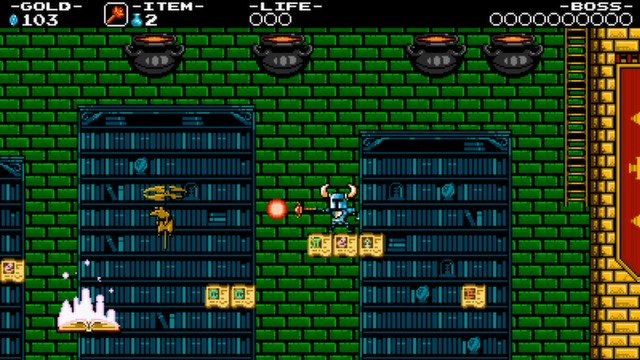
-
Shovel Knight #2
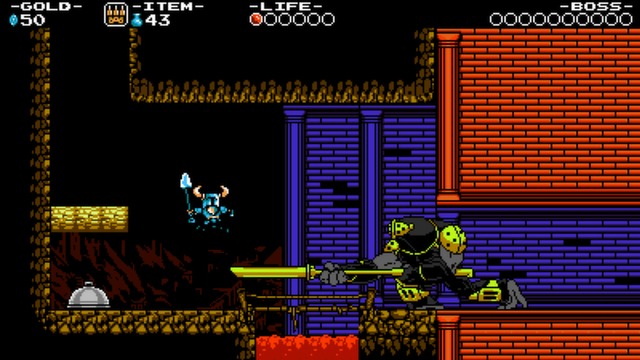
-
Shovel Knight #3
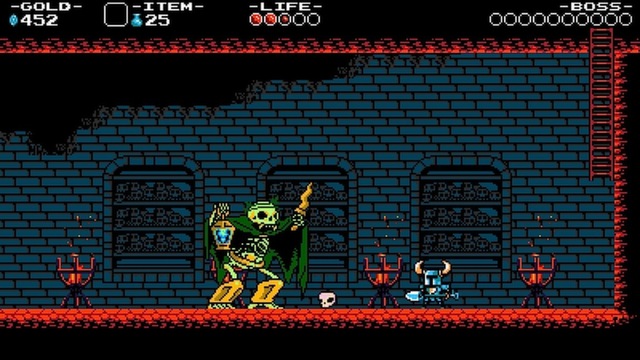
-
Shovel Knight #4
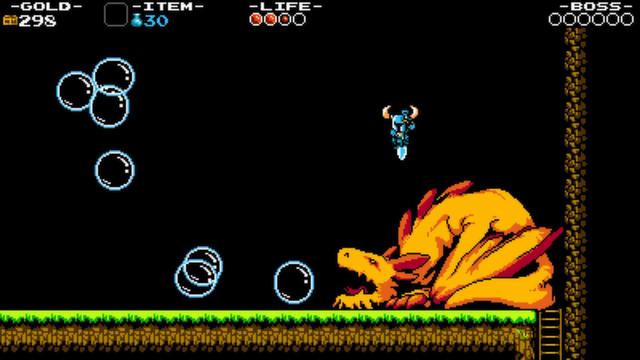
-
Shovel Knight #5

-
Shovel Knight #6
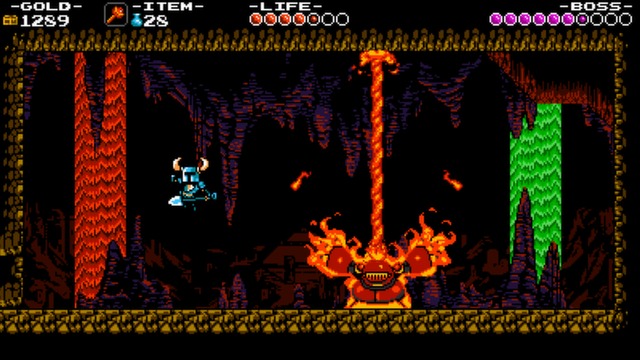
-
Shovel Knight #7
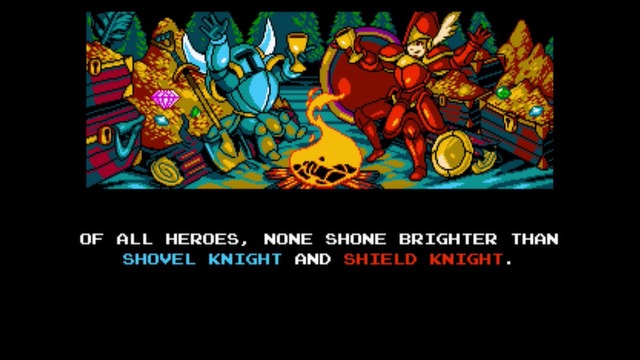
-
Shovel Knight #8
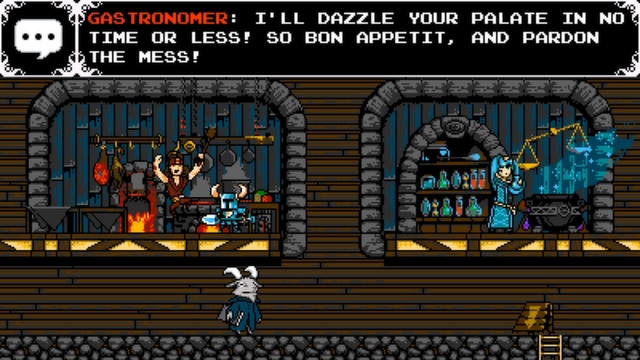
-
Shovel Knight #9
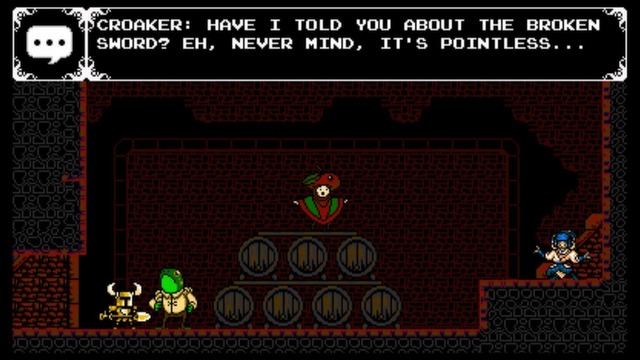
-
Shovel Knight #10
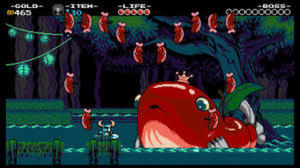
-
Shovel Knight #11
